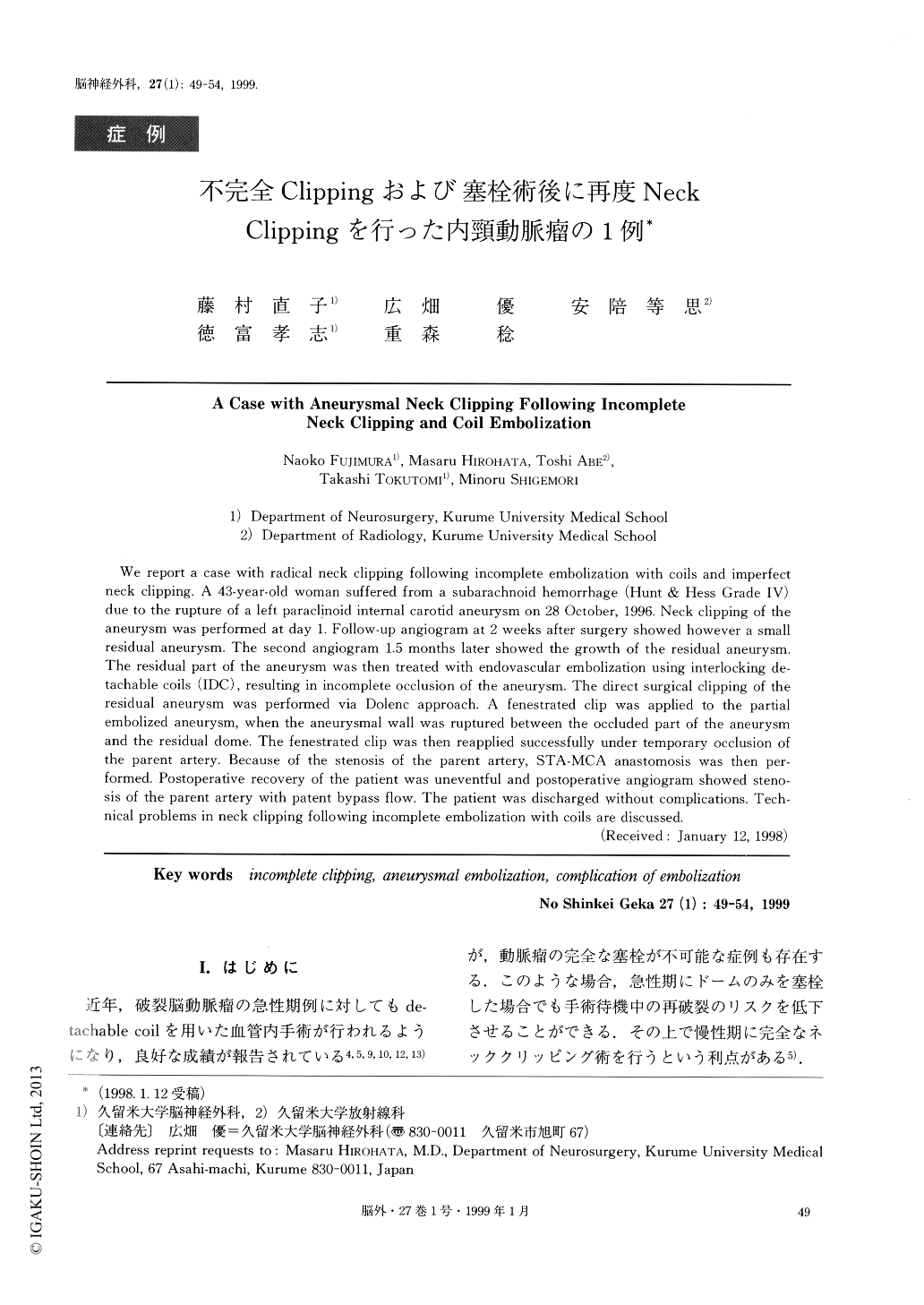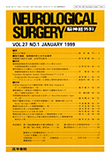Japanese
English
- 有料閲覧
- Abstract 文献概要
- 1ページ目 Look Inside
I.はじめに
近年,破裂脳動脈瘤の急性期例に対してもde-tachable coilを用いた血管内手術が行われるようになり,良好な成績が報告されている4,5,9,10,12,13)が,動脈瘤の完全な塞栓が不可能な症例も存在する.このような場合,急性期にドームのみを塞栓した場合でも手術待機中の再破裂のリスクを低下させることができる.その上で慢性期に完全なネッククリッピング術を行うという利点がある5).
しかし不完全な塞栓術後にネッククリッピング術を行うことは技術的に非常な困難を伴う症例もあることが報告されている1,6,8).今回われわれはコイルによる不完全閉塞後にネッククリッピング術を試み,種々の技術的な困難さを痛感したため,手術手技上の問題点や治療方針についての考察を加えて報告する.
We report a case with radical neck clipping following incomplete embolization with coils and imperfectneck clipping. A 43-year-old woman suffered from a subarachnoid hemorrhage (Hunt & Hess Grade IV)due to the rupture of a left paraclinoid internal carotid aneurysm on 28 October, 1996. Neck clipping of theaneurysm was performed at day 1. Follow-up angiogram at 2 weeks after surgery showed however a smallresidual aneurysm. The second angiogram 1.5 months later showed the growth of the residual aneurysm.
The residual part of the aneurysm was then treated with endovascular embolization using interlocking de-tachable coils (IDC), resulting in incomplete occlusion of the aneurysm. The direct surgical clipping of theresidual aneurysm was performed via Dolenc approach. A fenestrated clip was applied to the partialembolized aneurysm, when the aneurysmal wall was ruptured between the occluded part of the aneurysmand the residual dome. The fenestrated clip was then reapplied successfully under temporary occlusion ofthe parent artery. Because of the stenosis of the parent artery, STA-MCA anastomosis was then per-formed. Postoperative recovery of the patient was uneventful and postoperative angiogram showed steno-sis of the parent artery with patent bypass flow. The patient was discharged without complications. Tech-nical problems in neck clipping following incomplete embolization with coils are discussed.

Copyright © 1999, Igaku-Shoin Ltd. All rights reserved.


